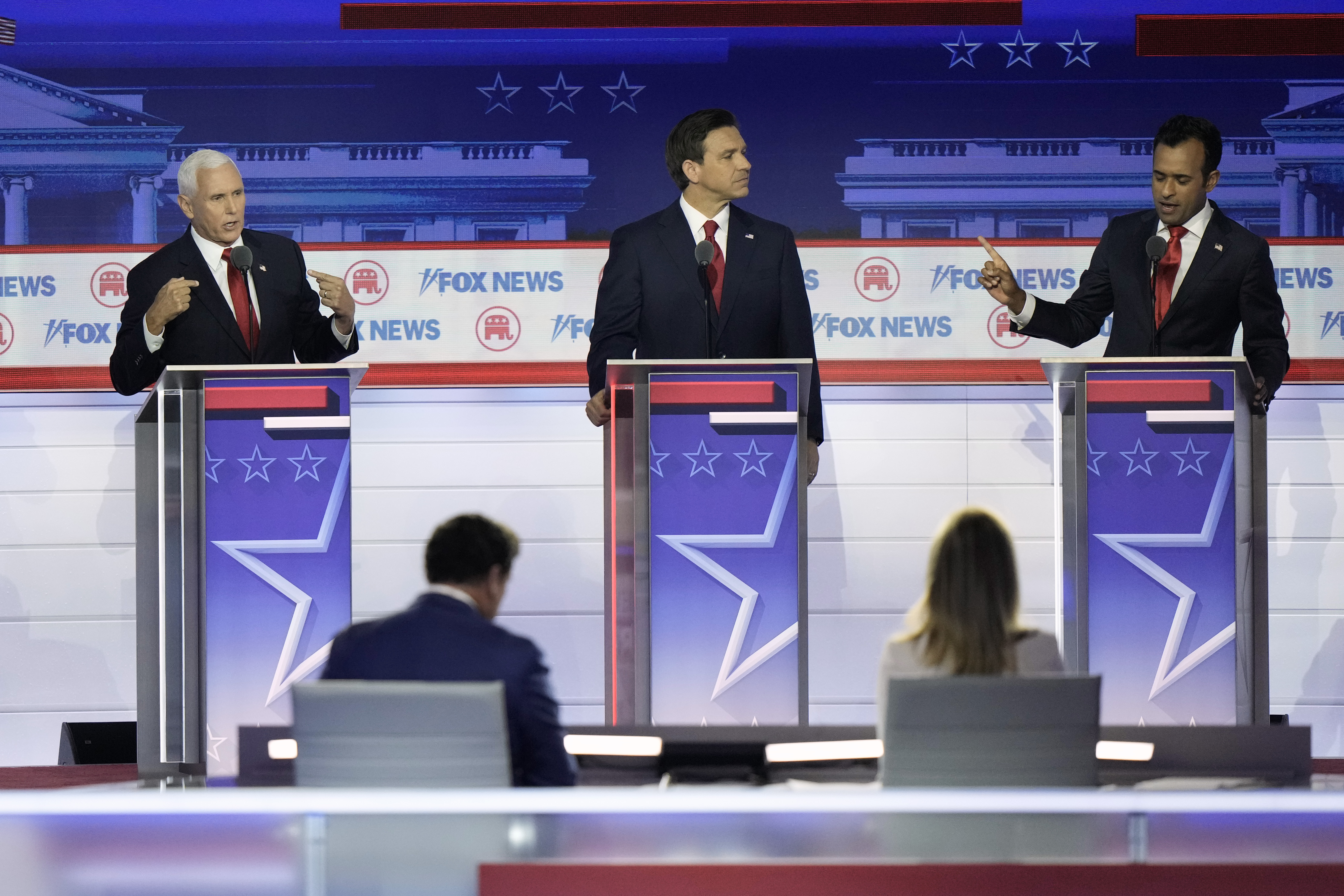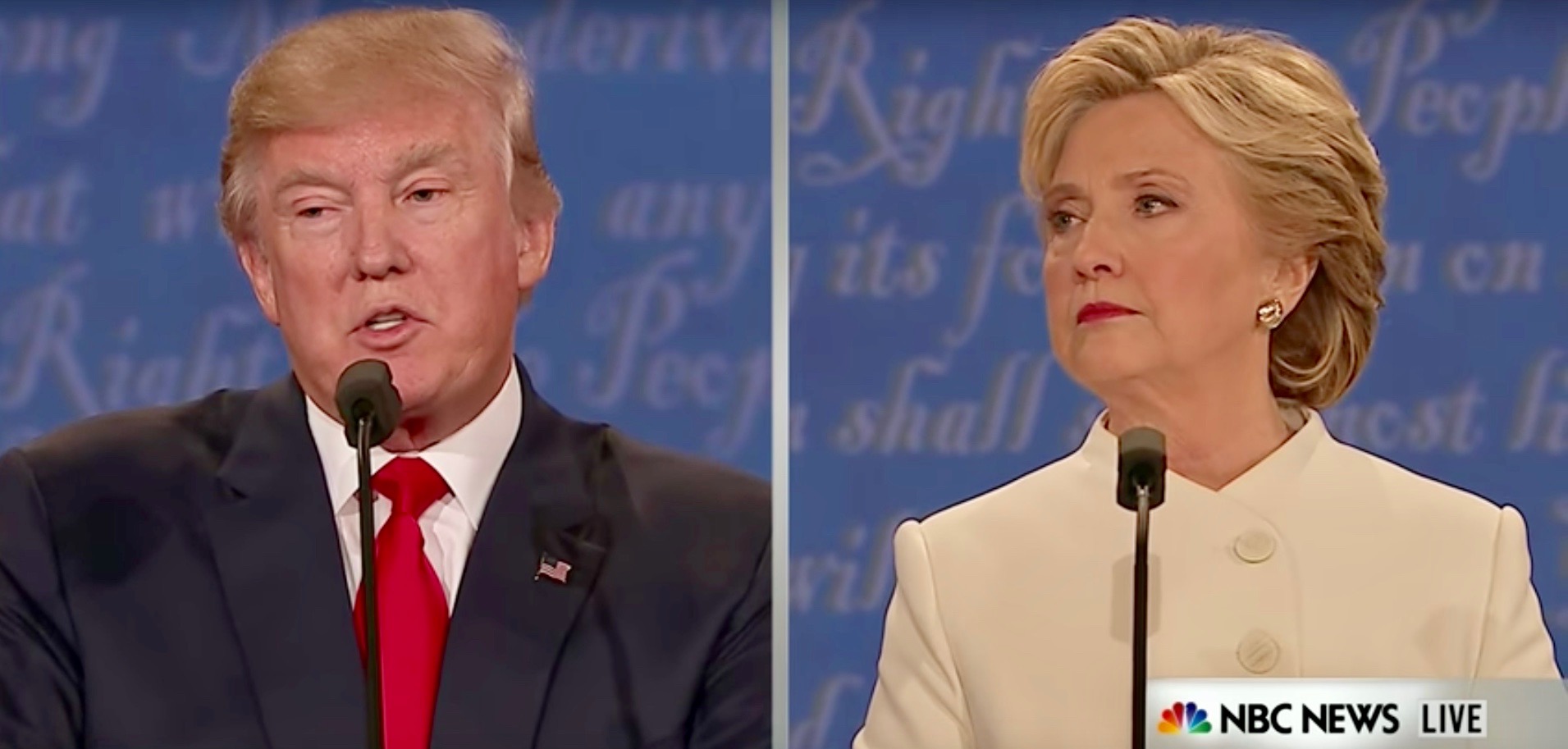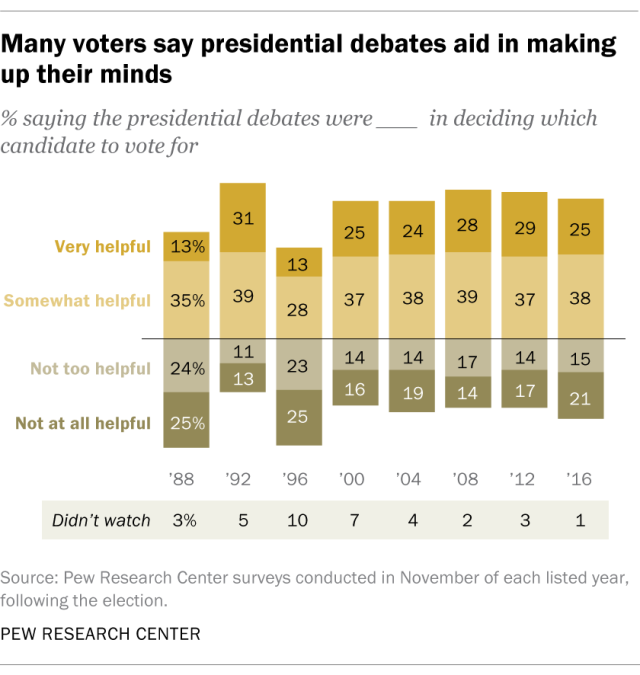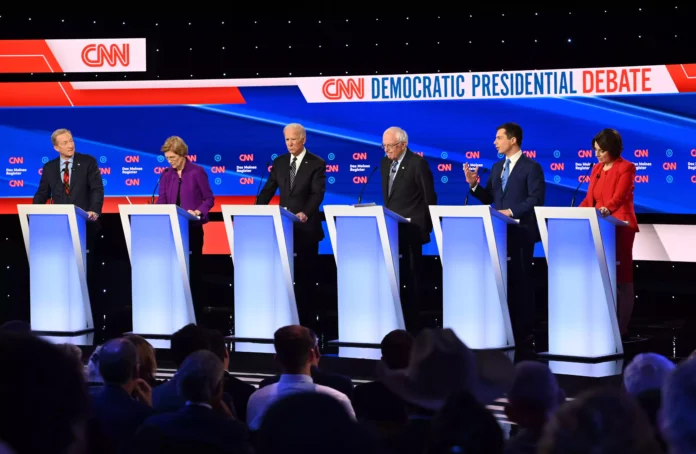In “Presidential Debate: An Analysis of the Candidates’ Policies and Performance,” we will explore the key aspects of the highly anticipated event. From understanding the history of the US elections and the two major parties to diving into the rules of the caucuses and primaries, this article provides valuable context. We will also examine the leading candidates in these races and the significance of the national convention debate. Additionally, we’ll take a closer look at the swing state and bellwether conditions, which greatly impact the outcome of the presidential debate. Join us as we delve into the policies and performance of the candidates vying for the highest office in the land.

This image is property of cloudfront-us-east-1.images.arcpublishing.com.
Table of Contents
US Election
The US Election is a highly anticipated event that takes place every four years, allowing citizens to have their say in the selection of the country’s leader. It is a crucial process that impacts not only the United States but also the rest of the world. The election process involves various stages, including primaries and caucuses, national conventions, and ultimately the presidential debate. Throughout history, the US election has seen the rise and fall of political parties, the implementation of different rules and regulations, and the establishment of key states that play a significant role in predicting the election outcome.
History of US Elections
The history of US elections dates back to the founding of the nation. The first official presidential election took place in 1788-1789, with George Washington becoming the first president of the United States. Since then, the election process has evolved, reflecting the changing needs and values of the American people. Over the years, various amendments and reforms have been made to enhance the democratic nature of the elections. Today, the US election stands as a testament to the nation’s commitment to the principles of democracy and the power of the people to choose their leaders.
History of 2 Parties
The history of the two major political parties in the United States, the Democrats and the Republicans, is deeply intertwined with the country’s electoral process. These two parties have dominated the political landscape for centuries, each representing different ideologies, values, and approaches to governance. The Democratic Party traces its roots back to Thomas Jefferson and his supporters, while the Republican Party was founded in 1854 as an anti-slavery movement. Throughout history, both parties have experienced periods of strength and weakness, undergoing internal reforms and realignments to adapt to the changing political landscape.
Other Important Parties
While the Democrats and Republicans may be the two most prominent political parties in the United States, there are also several other important parties that have played a role in the nation’s elections. These third parties often emerge to represent specific ideologies or issues that may not be adequately addressed by the major parties. Examples of such parties include the Libertarian Party, the Green Party, and the Constitution Party. Although they may not always win the presidency, these parties contribute to the diversity of voices within the political arena and can influence the policy agenda.

This image is property of journalistsresource.org.
Winning Meter
The Winning Meter is a term used to gauge the performance and success of candidates throughout the election process. It provides a visual representation of the candidates’ progress, reflecting their wins in primaries, caucuses, and ultimately the number of delegates they have secured. The Winning Meter allows voters to track candidates’ momentum and competitiveness, providing valuable insights into their chances of securing the nomination. Throughout the election season, the Winning Meter serves as a tool to assess the popularity and support for each candidate and helps to shape the narrative surrounding the election.
Rules of all the caucuses and primaries
The rules of caucuses and primaries vary from state to state, making the US election process intricate and diverse. Caucuses are typically community meetings where registered party members gather to discuss and debate their preferred candidates. These meetings involve several rounds of voting and delegate allocations, often requiring participants to publicly show their support. In contrast, primaries are more traditional elections conducted by secret ballot, allowing registered voters to cast their votes. Each state establishes its own rules regarding the scheduling, format, and eligibility criteria for participation in caucuses and primaries.
Differences between caucuses and primaries
The main difference between caucuses and primaries lies in the format and method of selecting candidates. Caucuses involve community meetings where participants engage in open discussions and multiple rounds of voting to determine delegate allocations. Primaries, on the other hand, are conducted as regular elections, where voters cast secret ballots to choose their preferred candidate. Caucuses often require more time and active participation, while primaries offer a more accessible and inclusive process for voters.
State-specific rules
Each state has the autonomy to establish its own rules and regulations for caucuses and primaries. This leads to a wide variation in the election process across the country. Some states hold closed primaries, allowing only registered party members to participate, while others have open primaries that allow all voters, regardless of party affiliation. Additionally, states differ in the scheduling of their caucuses and primaries, leading to variations in the significance and impact of their votes on the overall election.
Role of delegates and superdelegates
Delegates play a crucial role in the US election process. They are individuals who are elected or selected to represent their respective parties at the national conventions. Delegates are responsible for casting their votes to officially nominate the party’s candidate for the presidency. Superdelegates, on the other hand, are party leaders, elected officials, and influential members who hold automatic delegate status and are not bound by the outcome of the primaries or caucuses. They have the power to impact the nomination process and play a significant role in the selection of the final candidate.

This image is property of www.pewresearch.org.
Who is leading in primaries and caucuses?
Throughout the primaries and caucuses, candidates strive to showcase their popularity and gain the support of voters. The performance of each candidate can be analyzed through an overview of their achievements in terms of popular vote and delegate count, as well as a comparison of their performance in key states.
Overview of candidates’ performance
As the primaries and caucuses progress, candidates’ performance can be assessed by their ability to secure wins, accumulate delegates, and rally support among voters. Success in early states often sets the tone for the rest of the election season, shaping public perception and campaign strategies.
Analysis of popular vote and delegate count
The popular vote and delegate count are key indicators of a candidate’s overall success and viability. The popular vote refers to the total number of votes cast in favor of a candidate, while the delegate count reflects the number of delegates a candidate has secured through victories in caucuses and primaries. Analyzing the popular vote and delegate count provides insights into the candidates’ ability to garner support and ultimately secure their party’s nomination.
Comparison of key states
Key states, also known as swing states or battleground states, play a critical role in determining the outcome of the election. Analyzing the candidates’ performance in these states provides valuable insights into their competitiveness and chances of success. The strategies and policies they employ to appeal to voters in these key states can significantly impact their overall campaign and chances of winning the presidency.
National Convention Debate
The National Convention Debate holds immense importance in the US election process, serving as the platform for the selection of the party’s nominee for the presidency. During the convention, delegates from each state gather to debate and discuss the candidates, ultimately casting their votes to officially nominate the party’s candidate.
Importance of national conventions
National conventions provide an opportunity for party members and delegates to come together, review the various candidates, and unify behind a single nominee. It is a forum where the party showcases its platform, values, and vision for the country, allowing voters to gain a better understanding of the party’s policies and priorities.
Role of delegates in selecting the nominee
Delegates hold the power to select the party’s nominee during the national convention. Their votes and support are crucial in determining which candidate will represent the party in the presidential election. Delegates are often influenced by both the candidates’ performance in the primaries and caucuses, as well as their ability to inspire and lead the party towards victory.
Debate agenda and format
The debate agenda and format during the national convention vary depending on the party and the specific circumstances of the election. However, debates often revolve around key issues and policies important to the party and the nation as a whole. Candidates typically have the opportunity to present their vision, highlight their accomplishments, and engage in direct exchanges with their opponents. The debates provide a stage for candidates to showcase their strengths and rally support among the delegates.

This image is property of media-cldnry.s-nbcnews.com.
Presidential Debate
Presidential debates are highly anticipated events that allow voters to evaluate the candidates’ policies, performances, and ability to lead. These debates provide a platform for the candidates to directly address the concerns and aspirations of the American people and engage in rigorous discussions on key issues.
Significance of presidential debates
Presidential debates are pivotal moments in the electoral process, influencing public opinion and voter decisions. They give voters the chance to see how candidates perform under pressure, respond to challenging questions, and articulate their policy positions. The debates offer insight into the candidates’ leadership abilities, communication skills, and their potential impact on the nation if elected.
Format and rules of presidential debates
The format and rules of presidential debates are established by nonpartisan organizations such as the Commission on Presidential Debates. These organizations strive to ensure fairness and equal opportunity for all candidates. Typically, debates involve a series of questions and responses, as well as opportunities for candidates to engage in direct exchanges and rebuttals. The strict time limits and rules ensure that each candidate has a fair opportunity to express their views and engage in substantive discussions.
Analysis of the candidates’ policies
Presidential debates offer a platform for candidates to present their policy proposals and plans for the nation. Through their responses to questions, candidates reveal their stance on various issues, such as the economy, healthcare, foreign policy, and social issues. Analyzing the candidates’ policies helps voters understand their priorities and potential impact on the country.
Analysis of the candidates’ performances
The candidates’ performances during the presidential debates are closely scrutinized by voters, pundits, and political analysts. Their demeanor, communication skills, and the ability to articulate their views effectively can significantly impact public perception and voter preferences. Analyzing the candidates’ performances allows voters to evaluate their leadership qualities, critical thinking abilities, and capacity to address the challenges facing the nation.
Impact of debates on public opinion
Presidential debates have the potential to shape public opinion and influence voter decisions. The debates allow voters to directly compare the candidates, their policies, and their ability to address the issues that matter most to them. The performances and responses exhibited during the debates can sway undecided voters and solidify the support of those already leaning toward a particular candidate. The impact of the debates on public opinion can therefore be crucial in determining the final outcome of the election.
Bellwether Condition
Bellwether states, often referred to as swing states, play a significant role in predicting the outcome of the election. These states have a history of closely mirroring the overall national outcome, making them crucial focal points for candidates’ campaigns.
Definition of bellwether states
Bellwether states are those that have a track record of consistently aligning with the national presidential vote. These states are seen as indicators of broader voting patterns and often receive substantial attention from political campaigns. By studying the voting trends and outcomes in these bellwether states, analysts can make informed predictions about the overall election results.
Significance of bellwether states in predicting the election outcome
By closely monitoring the voting patterns and outcomes in bellwether states, political analysts can make educated predictions about the election’s final outcome. These states serve as litmus tests for the candidates’ popularity and chances of success. Winning in bellwether states often signals wide appeal and the ability to capture the diverse interests and concerns of the electorate.
Analysis of candidates’ focus on bellwether states
Candidates recognize the significance of bellwether states in their path to victory and often dedicate considerable resources and efforts to secure votes in these states. The campaign strategies employed by candidates often reflect an understanding of the importance of these states in shaping public opinion and influencing the election outcome. Analyzing the candidates’ focus on bellwether states provides insights into their campaign priorities and electoral strategies.
In conclusion, the US election is a complex and dynamic process that shapes the leadership and direction of the nation. Understanding the history of US elections, the role of political parties, the intricacies of caucuses and primaries, and the significance of national conventions and debates is essential in comprehending the electoral landscape. By analyzing candidates’ performance, policies, and focus on key states, voters can make informed decisions and actively participate in the democratic process that defines the United States.

This image is property of thumbor-prod-us-east-1.photo.aws.arc.pub.




